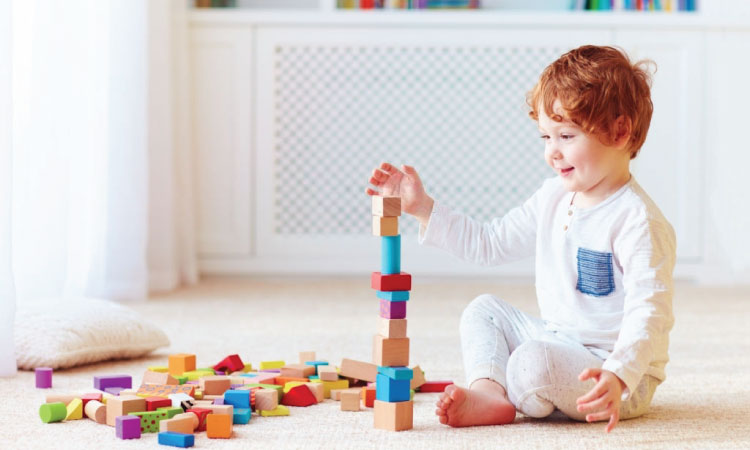Babies and toddlers grow faster than you expect- and to ensure that their fine motor skills, mind and body also develop at the same pace, experts suggest engaging them in activities. According to the National Early Childhood Care and Education (ECCE), parents should to promote development of concepts like language, imagination, etc. with activities like clapping, peek-a-boo, push and pull toys, rolling hands, reading picture books, singing lullabies and rhymes.
21 Indoor Activities For Babies And Toddlers
During different stages of development, your baby acquires new skills from his surrounding environment. However, it is essential to ensure that your baby has the required skills to perform the indoor activities. Here are 21 indoor activities for toddlers that are based on different age categories for their overall wellbeing.
a.) Indoor Activities For Babies (0-6 months)
These activities aim at amusing the babies, develop gross motor skills, play and exercise. These indoor activities also stimulate the baby’s mind and brain and they get exposed to various expressions, sounds, their immediate environment and fun.
1. Peek-a-boo

Babies love getting startled and amused at this age. You can play peek-a-boo with your baby by hiding your face with a scarf and seeing whether your baby takes it off and finds you. You can also try this same activity by hiding your baby’s favourite soft toy with a scarf and checking whether your baby repeats the same actions.
2. Playing with different textures
You can give your baby different textured materials to play with. Different textured materials help in enhancing your baby’s sensory skills. You could help your baby experiment with different textured clothes such as towels, handkerchiefs, scarves, etc. You may also give items of different textures such as wooden blocks, books, etc. to your baby to play with.
3. Tracking an object
Choose one of your baby’s favourite toys and place it in front of them. Now once their eyes are fixed on the toy, slowly drag it further from them. Your baby will slowly start crawling towards the toy to catch it. The tracking activity is ideal for helping babies crawl faster.
4. Kicking
Take a roll of tissue paper and place it on a surface from where it can roll down like a curtain. Now bring your baby near the hanging roll of tissue paper and make it lie on its back. Gently take its leg and start tapping on the tissue paper. Your baby will start mimicking the action and will start trying to kick the tissue paper. This activity will help your baby to learn kicking.
5. Dancing with your baby
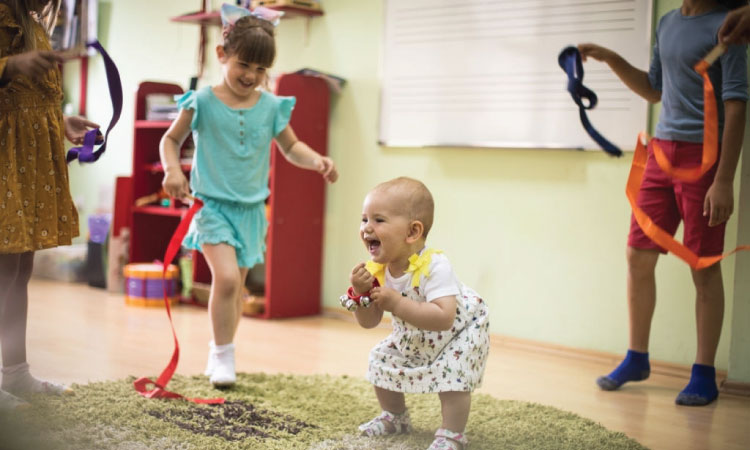
Put on your favourite music, hold the baby near your chest and start gently rocking it. Move around a bit while both you and your baby enjoy the music. Dancing with your baby will provide you with more physical contact and will also help strengthen your bond with your baby.
b). Indoor Activities For Babies (6-12 months)
Most babies start to sit up by 7-8 months, albeit some start with support. That opens a whole new world to them and they also start to understand that they need to stand and walk. Sounds are their new best friend, not only do they make a variety of them but also love to listen to different sounds!
6. Stacking
You may teach your baby stacking with the help of toy blocks or paper cups. Take 4-5 paper cups and start stacking them one on top of the other. Now give the paper cups to your baby and let them stack. Once your baby has stacked the cups, you may break the stack and make them start again.
Stacking helps in improving your baby’s motor skills. They learn to balance and construct. They also feel various textures and shapes. You may also try to compete with your baby to make this game more exciting for them.
7. Reading

Introducing your baby to reading helps their overall vocabulary. Even though they cannot make much sense, they get exposed to new words, expressions and a variety of pictures, colours and textures.
While reading to your baby, you may opt for large books with pictures or pop-up characters. You could point towards the pictures while reading to make reading more interactive. Change your voice for different characters to try to engage them more. You may also change your expressions while reading so that your baby understands whether something happy or sad is going on in the story.
According to the National Youth Readership Survey, introducing reading during the early developmental phases of children helps in nurturing their interests and making it a life long habit.
8. Introducing them to rhymes
You may choose nursery rhymes or make up new rhymes using similar words. For example, you may use rhyming words like try, dry, fry, shy, cry, etc. in your poems. The basic idea behind this activity for toddlers is to introduce your baby to language and vocabulary. Using language at an early stage will help them pick up words faster.
Infact, the more languages you expose your baby to, the better they will learn them. I have known some toddlers who’d speak 3-4 languages at one go!
9. The shell game
We all must have played the game of finding the shell below the cup. For this activity, take two cups and a small piece of chocolate or coloured ball. Now put the ball under a one of the cups and move the cup around. See if your baby picks the right cup for the ball.
Even if your baby gets it wrong, it doesn’t matter. This activity helps in improving your baby’s attention skills and also facilitates memory development. And fun is unlimited!
10. Wooden puzzles
There are many wooden puzzles that help improve your baby’s problem solving and motor skills. One such puzzle is the wooden shape puzzle that allows your baby to take out the blocks from the shape and place it back to their respective shapes. The different shapes available are square, triangle, star, circle, etc. This will help your baby identify and differentiate between the different shapes available.
c). Indoor Activities For Toddlers (12-18 months)
Most babies can stand and walk around 14-15 months. Now they can explore the whole world- they will try to reach everywhere and childproofing becomes a necessity. A lot of kids have also said the first word by this age, so the activities for kids this age also have to be more exciting!
11. Blowing bubbles

Babies love playing with bubbles. When they see so many bubbles together, they go after the bubbles to burst them. Blowing bubbles is one of the crucial indoor activities for infants. A blowing activity helps your toddler to develop oral motor skills. It also helps in their speech development. You may also try other blowing activities like blowing whistles, straws, cotton balls, etc.
12. Matching lids to bottles
Take 3-4 bottles with different colour lids. Now open all the lids and ask your baby to put on the lids to the right bottles. At first, it may be difficult for your baby to put on the lids because their hands are so tiny. However, slowly and steadily, with trial and error, your baby will learn to do it. If your baby gets it wrong, you may unscrew the bottles and ask them to try again. This activity helps in developing your baby’s motor skills, shape and size recognition.
13. Sorting
There are many activities related to sorting for infants. You may buy a sorting activity box or make one at home. Take 4-5 different colour balls of the size of a ping pong. All you need is a box and an ice cream scoop. Now put all the balls into the box and ask your toddler to take the balls out of the box. Your toddler will use the ice cream scoop to take the balls out of the box. Sorting exercises are beneficial for hand and eye coordination.
14. Find your animals
In a box, put in 3-4 of your baby’s favourite animals and hide them with pieces of torn tissue papers. You may also use the different sounds that the animals make to show your toddler that there is something under the tissues. As your toddler finds the toys, you may make sounds that the particular animal makes.
This will help your toddler in identifying the animals by sounds and it could start mimicking the sounds that the respective animals make.
15. Playing with different sounds
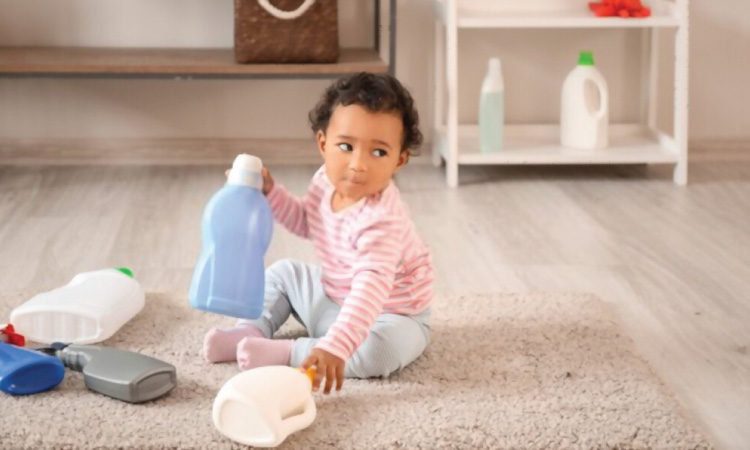
Babies are attracted to different sounds. It startles them and makes them smile. For this activity, take two plastic bottles. Fill one bottle with rice and the other bottle with something heavier like cashew nuts. Now glue the top of the bottles to make sure that your baby can’t open them.
Shake both bottles in front of the baby and see how it responds. Your baby will want to shake the bottle on its own. Both bottles will make different sounds which will help your baby in identifying different sounds. This will improve your baby’s listening skills.
d). Indoor Activities For Toddlers (18-24 months)
Children this age have way too much energy and to channelize it is a challenge for many parents. Here are some interesting ways to keep them occupied.
16. Matching socks
Babies love to see their mothers while they do household chores. Many times, while you are folding the laundry, you may notice that your baby starts folding clothes with you. You may use 3-4 sets of different coloured socks and mix them up. Your baby will start matching the socks with their pairs. This activity helps in keeping your baby’s mind engaged and also helps in identifying and sorting similar colours.
17. Moving buttons into a circle
Take a Ziplock bag, put some buttons, add some face gel and lock it tightly. You may lock the bag with glue for added safety. Now draw a large circle on the bag and stick it on your door. Show your toddler how to move the buttons inside the circle and make them do it too. This activity is a great way of developing your toddler’s motor skills.
18. Matching toys to images
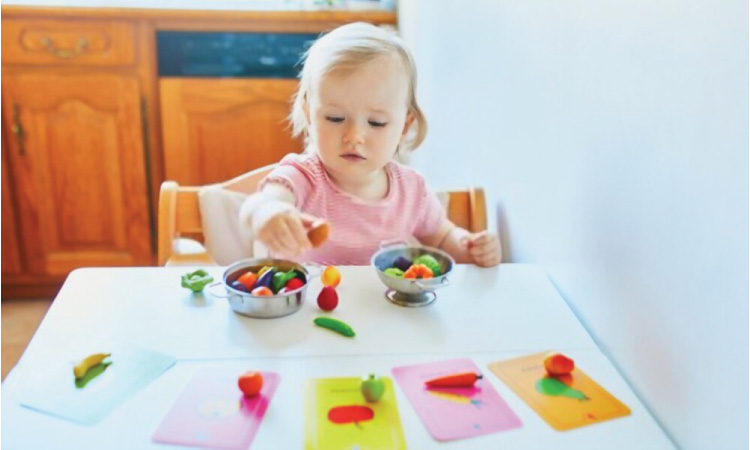
At this age, your baby is developing its motor skills. They are more receptive to what you teach them. You can buy a set of toys with matching images and ask your toddler to match the toy with the image. For example, if you buy a set of animal toys, you can buy or print images of those toys. Your toddler will have to match each animal with the corresponding image. You may also buy animal flash cards for the same purpose.
19. Sensory walk
One of the popular indoor activities for pre-schoolers is sensory walk. You may cut out cardboard pieces in the shape of your toddler’s foot. On each cardboard cut-out, you can try gluing different materials such as cotton, fur, rice, beans, etc. Walking on sensory surfaces helps in stimulating activity and blood circulation. It also helps your toddler in hand and leg coordination.
20. Sticking foam numbers on outlines
Foam letters are a great way of engaging toddlers and helping them learn at a faster pace. The purpose of this activity is to help your toddler identify shapes of numbers and letters. On a piece of paper, draw the outline of the foam numbers with a thick marker and place two foam numbers on the outline. Your toddler will understand what to do and will follow your suit.
21. Inserting sticks in a box
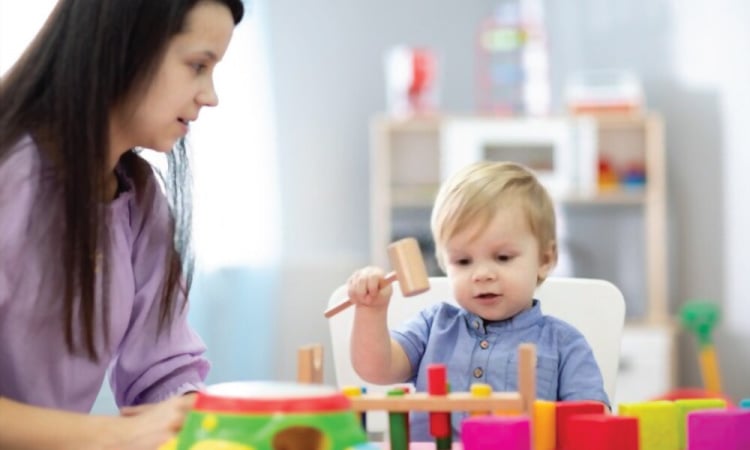
Tape three different coloured papers on a cardboard box. Use a scissor to make slits on top of the box. Take coloured ice cream sticks and put them into the slits matching to the colours of the paper. Now leave 4-5 slits open and see if your toddler matches the ice cream sticks to the colour of the paper. Your toddler may fail during the first attempts but will eventually pick up pace. Make sure that the slits are big enough for your toddler to insert the sticks in.
Playing is said to be connected with our baby’s brain development. These indoor activities for kindergartners, infants, babies, etc. will help in enhancing your baby’s growth and developing its motor skills. The best part is that these activities don’t require huge amounts of investment. Make sure that you play these activities with them so that they feel more excited and engaged while trying new things.
